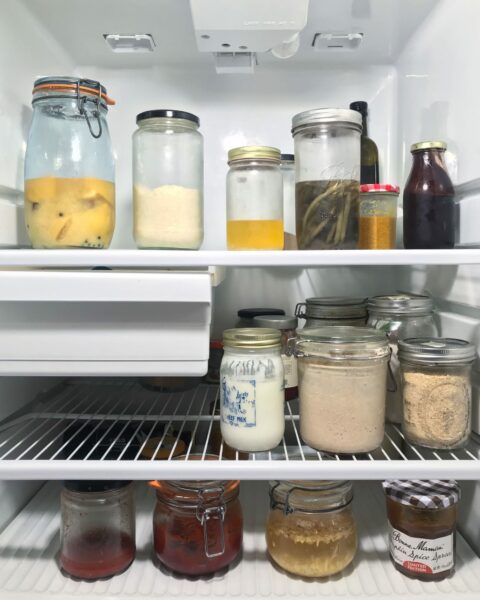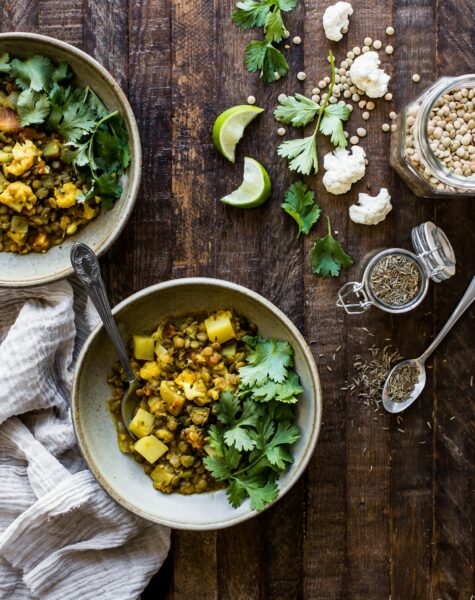Reduce waste and save money
by Anne Marie Bonneau
the zero waste chef
I tried to put these nine items into what-I-despise-most order but I found that kind of ranking simply too difficult. Bottled water or coffee pods? That’s a tough call, especially since Nestlé peddles both.
However, I’m leaning toward coffee pods. Not only do they create obscene amounts of waste—Keurig alone sold nearly 10 billion packs of pods in 2014—they also represent the Wall·E-fication of our society. Will every foodstuff eventually be pre-measured and pre-packaged for the specially designed machines that prepare it for us? Personally, I enjoy the ritual of brewing coffee in the morning—or tea. But you can now buy tea pods as well, surely a sign of the end-times.
Convenience has, at the very least, exacerbated—if not created—our waste crisis. Beginning in the 50s and 60s, consumer products companies marketed their wares—disposable dishes, disposable cutlery, disposable plastic wrap and eventually disposable everything—as time-saving lifesavers. As these companies and their products seduced and hooked us, they simultaneously chiseled away at our life-skills toolkit, leaving us more dependent on so-called disposable materials. (The term “disposable” suggests an item is “able” to be “disposed” of but the items must go somewhere in the environment.)
Yes, some coffee pods can be recycled. Nespresso manufactures its pods out of aluminum. Other brands produce pods consisting of plastic and aluminum. Theoretically, anything can be recycled if we throw enough money and specialized, outrageously expensive, heavy equipment at it. That doesn’t mean it will be recycled. And besides, recycling is a last resort. We can’t recycle our way out of our garbage crisis. Corporations produce more than our systems can possibly handle.
The list
1. Plastic wrap
Well before I went plastic-free, I rarely bought plastic wrap. Trash aside, do we want our food to touch this stuff?
Unfortunately, most [plastic wraps] are now made with low-density polyethylene (LDPE) or polyvinylidene chloride (PVDC). (The exceptions are wraps used in catering and professional kitchens.) LDPE and PVDC don’t adhere as well as plastic wraps made with PVC, but more worrying is the fact that LDPE may contain diethylhexyl adipate (DEHA), another potential endocrine disruptor that has been linked to breast cancer in women and low sperm counts in men. — Dr. Weil
Alternatives:
Place a plate over a bowl of leftovers to cover them. Or store leftovers—and all kinds of food—in glass jars. Glass offers the additional benefit of a clear view of the food you have on hand. If you can see it, you’ll more likely eat it before it heads south.

2. Plastic baggies
Again, do you want plastic coming into contact with your food?
Yes, plastic baggies make packing lunches convenient but you can find many alternatives. And the cost of cheap baggies does eventually add up. On Amazon, with its rock-bottom prices, 90 Ziploc sandwich bags cost around $9. Ten cents a bag may not sound like much but if you pack lunches for a couple of kids and use a couple of baggies per kid, you’ll go through these in a couple of months. Isn’t Jeff Bezos wealthy enough?!
Alternatives:
Pre-Covid, when I still worked in an office, I packed my lunches in glass jars. For small children, I don’t suggest packing lunches this way. Use metal lunch containers such as LunchBots or wrap up sandwiches in a large napkin, Furoshiki style.
3. Teflon anything
Back when my daughter MK wrote her blog The Plastic-Free Chef, a representative from Dupont once left a comment on a popcorn post, in which MK had slammed PFAS-treated microwave popcorn bags. (PFAS—also known as forever chemicals—render the bags grease-proof.) The condescending rep wrote about the virtues of Teflon at length, saying she “understood” my daughter’s supposed confusion. “You have arrived, MKat,” I told her.
Teflon-coated pans release toxic gases when heated. They also tend to wear quickly. Thoughtlessly use a metal spatula in there and you can damage the coating. When it begins to flake, it gets into your food. If you use the plastic utensils designed for Teflon pots and pans, you combine heat, plastic and food. But wait there’s more! The inventor of Teflon was inducted into the Plastics Hall of Fame (yes, that’s a thing). I wonder if the five gyres of plastic swirling around in and wreaking havoc on our oceans have been inducted yet.
Alternatives:
I cook with stainless steel pots, cast iron pans and enameled cast iron. (Go here for more on choosing pots and pans.)
4. Bottled beverages
I banned from my kitchen not only bottled water but also other bottled drinks such as soda and juice. In addition to the plastic waste these drinks generate, most of them are unhealthy, filled with sugar and, like heavy bottled water, travel many miles to reach the store.
Alternatives:
You have so many to choose from: iced tea, lemonade or, if you want to get adventurous, kombucha, ginger beer or natural soda.
5. Coffee pods
See opening rant.
Alternative:
Coffee brewed in a French press or pour-over coffee maker is very simple.
6. Teabags
Teabags just about send me over the edge. Food manufacturers can charge only so much for a commodity like a teabag. So they have “improved” paper teabags by creating silk-like bags in order to justify charging a premium for them.
Many of these silky bags are made of synthetics—in other words, plastic, not silk. And some of them shed billions of plastic microfibers per cup of tea. (Yes, billions!) Even paper teabags contain “polypropylene, a sealant used across the [tea] industry to ensure bags hold their shape.” You want tea leaves infusing your piping hot water, not the chemicals found in plastic.
Alternatives:
Loose leaf tea brewed in a teapot and strained out.

7. Paper towels
My mother—who at 89 grew up without paper towels—wonders how I live without them. Let me preface the following rant with the admission that my research into paper towel manufacture comes from the sawmill and paper mill passages of Richard Scarry’s What Do People Do All Day? However, I think I can safely claim that just some of the steps in the life-cycle of a paper towel include:
- Chop down trees
- Transport logs to the sawmill
- Harvest scrap lumber from logs cut into rough boards
- Transport scrap lumber to the paper mill
- Run scrap lumber through the chipper
- Add a bunch of water and chemicals to the wood chips to make wood pulp
- Run the pulp across a bunch of screens to form paper towels
- Bundle the long sheets into rolls of paper towels
- Shrink wrap the rolls of paper towels in plastic
- Transport the paper towels to the warehouse
- Transport the paper towels to the store
- Drive to the store to buy paper towels
- Unwrap the plastic and throw it out or into the recycling bin because you’re in denial that that kind of flimsy plastic can actually be recycled
- Use the paper towel once
- Toss the soiled paper towel into the garbage
- Argue with your partner or kids about who should take out the garbage
- Lug your garbage to the curb because you lost
- Repeat until the last tree falls
Alternatives:
I have a lifetime supply of cotton rags I cut out of my kids’ old t-shirts. Yes, some nasty manufacturing processes went into the production of said t-shirts but I will use these rags for years. If you have the crafty gene, you could make some unpaper towels.
8. Paper napkins
I imagine people buy more paper towels than paper napkins—or use paper towels as napkins—but these too have easy replacements, unlike bathroom tissue. Don’t worry, I won’t include bathroom tissue on this list. However, regarding wipes for wee-wee, as clinical professor of obstetrics and gynecology Lauren F Streicher, MD, told The Guardian last year,
People urinated long before toilet paper became available. There are zero health concerns with this … people have urine on their underwear all the time.”
Alternative:
Cloth napkins make eating more appetizing. They will also save you money over time, as will all of the suggestions on this list. Yes, you must wash them—I wait until ours actually appear soiled, usually after a few uses—but they take up very little space in the washing machine.
9. Highly processed food
Of everything on the list, highly processed food will require the most effort to replace. The Western diet—which the majority of us eat—consists of these products, almost always packaged in shiny plastic. It’s convenient but not healthy for us or the planet.
Alternative:
Cook real food. Yes, home-cooked meals require time to prepare but they taste better than highly processed food, will improve your health and likely save you money. You need not cook anything elaborate. For time-saving ideas, read my previous newsletter, “How to Save up to 5 Hours a Week in the Kitchen.”

This article was written by Anne-Marie Bonneau and reprinted here with her permission. Read more on her website, The Zero Waste Chef.
